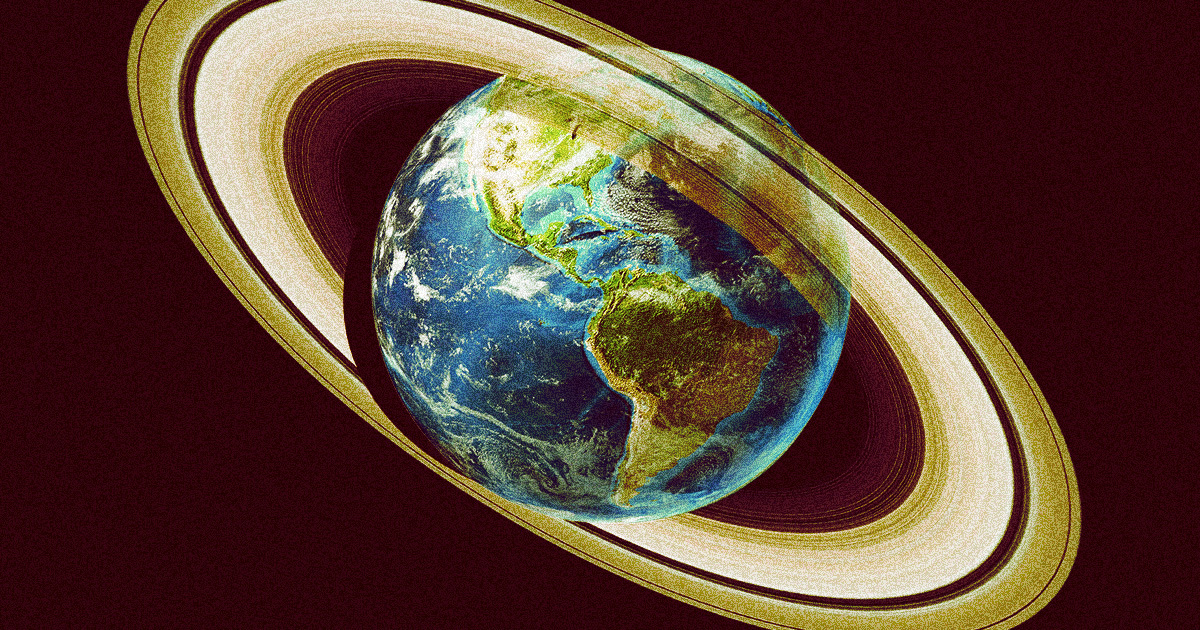
Earth may have had its own ring system that formed around 466 million years ago, lasting for tens of millions of years.
As detailed in a new study published in the journal Earth and Planetary Science Letters, researchers propose that the ring may have formed after a large asteroid came within our planet’s Roche limit — a distance at which the tidal forces of the Earth’s gravity begin to pull the rocky body apart. Gradually, as it continued to deteriorate, the asteroid’s remains were scattered across the Earth’s orbit, forming a ring like one of Saturn’s (though probably not as magnificent.)
If the researchers are correct, our planet still bears the scars of this bygone formation: 21 impacts from meteors that dropped out of the ring, all falling within a window near the Earth’s equator too narrow to be random.
The work not only provides a compelling explanation for these puzzling craters, but could also explain a period of cooling known as the Hirnantian Icehouse, which is considered one of the coldest stretches in the past half billion years of the Earth’s history.
“The idea that a ring system could have influenced global temperatures adds a new layer of complexity to our understanding of how extra-terrestrial events may have shaped Earth’s climate,” said lead author Andy Tomkins, a geologist at Australia’s Monash University, in a statement about the work.
Middle Earth
To set the stage, the researchers had to demonstrate that the impact craters weren’t randomly distributed. First, they mapped them out using geological models that would account for the movement of the Earth’s tectonic plates, revealing where the meteors would’ve originally struck back in time. And boom: all of them were within 30 degrees of latitude from the equator.
Then, the researchers calculated how much land capable of preserving such old meteor strikes would have been near the equator all those hundreds of millions of years ago, which included regions in present day Western Australia, Africa, North America and parts of Europe.
That’s a broad area. And yet, just 30 percent of the suitable land would have been close enough to the equator, they found.
“Under normal circumstances, asteroids hitting Earth can hit at any latitude, at random, as we see in craters on the Moon, Mars and Mercury,” Tomkins explained in an essay for The Conversation. “So it’s extremely unlikely that all 21 craters from this period would form close to the equator if they were unrelated to one another. We would expect to see many other craters at higher latitudes as well.”
Throwing Shade
The ring would have cast a long shadow — literally. If it formed around the equator, the researchers believe it would have shaded a significant portion of the Earth’s surface.
In fact, that shade would have been enough to induce global cooling, Tomkins said. And the timelines match up: as paleoclimatologists understand it, the Earth began cooling 465 million years ago, and the Hirnantian Icehouse soon followed 20 million years later.
It’s too early to say if a ring was the sole driver behind that chilly period — or if it had a role at all. But the next step, according to Tomkins’ piece in The Conversation, is “to make mathematical models of how asteroids break up and disperse.”










